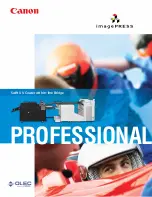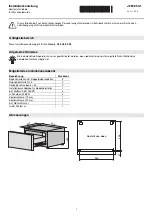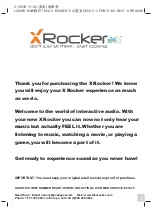
Software
AN4159
22/27
Doc ID 023639 Rev 3
Wake-up time from switch off to normal mode?
●
3.5 msec
Case 8:
What is the offset (variance) of absolute accuracy @ 10 °C (one of ST calibration
temperature) or 25 °C temperature?
●
LPS331AP absolute accuracy at 25 °C with one point calibration in ST fab is:
–
Max/Min = +/-1.8 mbar
–
This spread is bigger than what is possible to obtain at the end of the production
line because of the non ideality of the final test (noise, temperature etc.).
–
If performed at PCB level after soldering, the final accuracy is very high (in the
range of +/- 1 mbar total).
“How does ST define the soldering drift SPEC and what is the main factor impacting
soldering drift? And are there any guideline to reduce soldering drift?”
●
The soldering drift is a complex process and is not easy to identify the single root cause
of the soldering stress.
●
We define the soldering shift as the difference between the accuracy of the pressure
sensor before and after the soldering.
●
Soldering temperature profile is one of the major contributor to the soldering shift.
●
A well controlled temperature soldering profile that avoid peak temperature over the
max JEDEC spec can reduce the accuracy shift.
●
The guideline are the same already provided in the approval sheet and keeping the
temperature profile well controlled and do not exceed the max time at max temperature
and if possible in the lower part of the JEDEC specification.
“What is the absolute accuracy SPEC (0 °C ~ 0 °C) after quadratic compensation by AP
(application processor)?”
●
We confirm a typical accuracy of +/- 1mbar (in this case, it is the relative accuracy, it
means without the soldering shift)
“Regarding ‘Long term drift’, how many years can ST guarantee the absolute accuracy with
“Long term drift SPEC (+/- 1 mbar)?”
●
For 10 years.
Case 9:
“Will the device lifetime, calibration, accuracy or drift be negatively affected by temperature?”
●
We performed lifetime testing at low and high temperatures without any issues. Low
temperature is not an issue for the pressure sensor.
“Could the device be damaged by continual use below -20 °C?”
●
No.
“Will there be any power-up issues below -20 °C?”
●
No
“Is there a offset calibration method that is sufficiently robust?”
●
Difficult to answer, but other customers have successfully implemented this kind of
second order compensation to improve the accuracy under 0 °C.






































